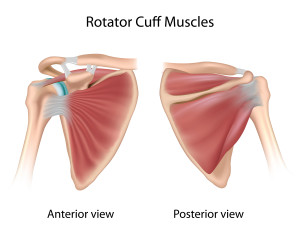 Some have questioned if Pacquiao even had a rotator cuff tear during the Saturday night bout. If so, how could he have fought (even as little as he did :-)), The truth is that people with smaller tears or tears that occur through attrition (occurring slowly over time from wear and tear), often can function quite well. In fact, some people usually those older and more sedentary than Manny, can have no symptoms at all. Frequently, their tears will remain symptom-free indefinitely. On occasion, however, these tears will go on to cause problems. In these cases, the person has a tear and often doesn’t even know it until they suffer some trauma. Then their previously asymptomatic shoulder becomes symptomatic.
Some have questioned if Pacquiao even had a rotator cuff tear during the Saturday night bout. If so, how could he have fought (even as little as he did :-)), The truth is that people with smaller tears or tears that occur through attrition (occurring slowly over time from wear and tear), often can function quite well. In fact, some people usually those older and more sedentary than Manny, can have no symptoms at all. Frequently, their tears will remain symptom-free indefinitely. On occasion, however, these tears will go on to cause problems. In these cases, the person has a tear and often doesn’t even know it until they suffer some trauma. Then their previously asymptomatic shoulder becomes symptomatic.
Rotator Cuff: Manny Pacquiao
See, there are four tendons that make up the rotator cuff (by the way, that’s cuff…not cup). Although, these tendons are responsible for a significant portion of our shoulder motion, when there is a small tear in just one of the tendons or when the tear occurs slowly over time, the remaining tendons and the rest of our shoulder can compensate for the injury. Often leaving us with little or no symptoms.
It’s true that in younger people, like Pacquiao, rotator cuff tears usually occur from trauma. That is, there is typically one significant injury that causes the tear in the previously healthy cuff. Most often, these tears will be quite symptomatic. Frequently they produce quite a bit of pain. Also, often there may be a fair degree of weakness and fatigue.
However, since Pacquiao competes in such a shoulder dominant sport and since he has been at it for so long, his tear might have been primarily of an attritional nature. This may explain why he was able to fight Saturday night.
Alternatively, he may just be tougher than the rest of us.
